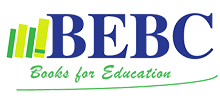Title: Collins Academic Skills Series - Numbers, Statistics and Data for the non-specialist
Publisher: Collins
Overall rating: 
|
Criterion |
Grade: 5/4/3/2/1 |
Comments (5 being the highest grade and 1 the lowest) |
|
Originality |
3.5 |
There are many EAP resources which instruct international students in the language to use when presenting data. This book differs in that it uniquely combines insight into and instruction regarding, the research process including methodology, with basic maths and how to analyse and ‘present numerical information clearly’. It also highlights the language needed to present data, including specific terminology, and grammar and vocabulary to effectively communicate results. This book bridges the gap between instruction in content and associated language use. |
|
Practicality |
3.5 |
As a self-study resource, this book is user-friendly. Information is easily accessible. The introduction provides useful information regarding the structure, content and use of the book, with some very practical study tips. This book could be worked through sequentially or units could be used in isolation, as required. |
|
Presentation |
3 |
|
|
Overall rating |
3.5 |
|
What outstanding strengths/weaknesses do you feel this title possesses? Strength: The Collins Academic Skills Series book ‘Numbers’ offers the unique combination of both content and language input. The student is shown ‘how’ to carry out primary research, using a variety of methods whilst being given complementary instruction in the use of the English language. Consequently, students are equipped with the necessary language, including both grammar and vocabulary, to communicate the results of their research. Furthermore, students are made aware of the language used when referring to mathematical terms. For example, the grammar of fractions. Weakness: Rogers and Willoughby state that this book can be used with students on Pre-sessional courses. A cautionary note here would be that this book is very simplistic in its content and therefore would most probably not be appropriate for students progressing onto post graduate study. This book uses very general, topics when providing examples and illustrations, for example, food and sport, which would make it both accessible and relevant to the 17-19, pre-academia, age group, but may prove de-motivational for students progressing onto post graduate, masters and PhD programmes. Furthermore, the mathematical content is very simplistic and akin to something that would be learnt in one’s former educational years. For example, ‘What is a percentage?’ Furthermore, it is worth noting, at this point, that this book begins by recognizing how numbers are used in everyday life; continues with learning how to work with percentages and understanding fractions and progresses onwards towards learning how to present survey results. A comment received from an Undergraduate student studying research methods on a 1st year comparative degree programme (IELTS 6.0) was that if she had to pay for it, she wouldn’t buy it! The reason being it was deemed too easy overall. That is, from a content input, mathematical and language perspective. That said, the book could be briefly referred to, to recognise the terminology used relating to data and statistics, such as ‘mean’, ‘mode’ and ‘median’ when working with averages or the grammar of fractions, for example. However, in my opinion, it is most likely that a pre-sessional student (IELTS 6.0-6.5) would discard this book. |
|
On which courses do you envisage being able to use this material? Courses for Pre-undergraduates Foundation (Year 0) and Pathway programmes leading to Undergraduate degrees As a reference guide/supporting resource for 1st year Undergraduates on degree or comparative programmes. Preparatory Academic English programmes for students up to an IELTS 5. (This book does not provide a reference to the CEFR (Common European Framework) |
|
Other comments This book is ideally suited to pre-undergraduate students (maximum of IELTS 5.0) who are in their late teens and/or students who need extra/additional support. This would be either in terms of language or basic maths. The simple explanations provided in this book would place it as a complementary supplement to core texts relating to research methods that were much greater in depth and provided a more complex presentation. Consequently, this book would provide a supportive function for weaker students. From a teacher’s perspective and in terms of CLIL, Content and Language Integrated Learning, this book could be a beneficial tool in bridging the gap, in a very simplistic way, between subject knowledge and language awareness. As instruction for elementary mathematics and associated language exist side by side, an awareness-raising opportunity exists for content teachers and language learners alike. For content teachers the opportunity is provided for them to ‘notice’ the specific language points necessary to achieve the educational outcome, whilst equipping them in raising the students’ awareness of the language requirements needed. Furthermore, for a tutor wishing to introduce a language element into a course which provides initial insight into research methods, data and statistics, this could be a beneficial resource. Primarily the purpose of this book is to equip international students with a clear understanding of the research process. It does this in a very comprehensible way, providing basic maths instruction and brief, associated language input. The Collins Academic Skills Series is aimed at ‘international students studying or preparing to study’… ‘at an English-speaking college or university’. Overall, this is a very good resource for an international student needing further or additional support, in this area of study. |
